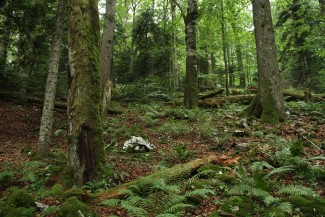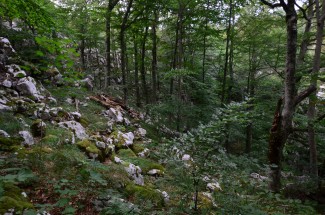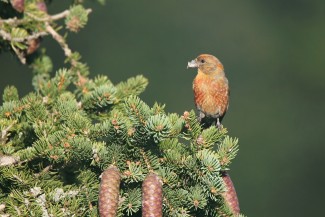Croatia
Back to full map of interestsList of locations
Croatia
The largest remains of primary forests in Croatia can be found in the Dinaric Mountains, primarily on Velebit, the largest mountain in Croatia. In the old and middle ages, Velebit was populated and used by the local inhabitants for cattle breeding and farming, with dairy products and wood being a subject of market and trade between villagers and farmers. However, with time, the highest parts of Velebit became depopulated and old farms and pastures became abandoned, mostly due to migration and urbanisation.1 At the beginning of the 20th century, big areas of vast primary forests were heavily exploited through management practices, as well as by locals for use of firewood and cattle breeding, with only the most inaccessible and remote sites having remained unscathed by direct human influence. After the 60s of the last century and the overall shift from anthropocentrism to environmentalism, Velebit became an area of conservation interest, due to its natural beauties, high level of biodiversity and geodiversity.
Velebit today is part of the NATURA 2000 Ecological Network, due to the presence of specific bird habitats and endemic species of flora and fauna. Apart from 2 national parks (NP Nortern Velebit and NP Paklenica, approx. together 40,000 ha), the remaining area of 200,000 ha is protected under the category of nature parks, thusly adding to the significance of global biodiversity conservation agenda, with the start of area protection dating as early as 1970s (Biosphere Reserve, 1978, UNESCO MAB – Man and the Biosphere Programme).
Forest communities represent Velebit’s true richness, being the most developed and most represented plant communities on the mountain. Coastal side is dominated by the forests of oak (Quercus pubescens Willd.) and oriental hornbeam (Carpinus orientalis Mill.), spreading up to about 400 m from the coast, while lesser areas are covered by the forest communities of Illyrian Black pine (Pinetum nigrae submediteraneum), as well as coastal beech forests (Seslerio fagetum). The continental side of Velebit is dominated by spruce forest communities (Picetum illyricum montanum), beech-fir forests and mixed old-growth forests of beech, fir and spruce. Beech represents the most distributed forest species, ranging from lower coastal lands up to the high peaks of the mountain, while the highest peaks of Velebit are dominated by Swiss mountain pine (Pinus mugo Turra). 2, 3
Dinaric Mountains are largely composed of carbonate bedrock with typical karst relief formations, both on the surface and underground. A discontinuous terrain is the result of erosion and other climate-induced transformations over time, and the whole mountain is situated atop limestone and dolomitic bedrock with high hydrological permeability, and soil types varying spatially from lithosols and coluvial soils to limestone-dolomitic brown and brown soil on limestone. 4, 5 The mountain itself has limited underground water storage capacity, but the region has high annual levels of precipitation (> 2,000 mm), low annual average temperatures (4-6 °C), and long periods of snow retention caused by temperature inversions in depressions (40 to 100 days of snow cover deeper than 30 cm). According to the CORINE classification, about 90 different habitat types can be distinguished on Velebit, most of which are under some form of protection (e.g., special reserve of forest vegetation Ramino korito, National parks of Sjeverni Velebit and Paklenica), with more than 2,500 plant species described and with about 100 endemic species identified.
| # | Location | Name | |
|---|---|---|---|
| 1. | Plitvice |  | Corkova Uvala |
| 2. | Plitvice | Čudinka | |
| 3. | Plitvice | Rjecica | |
| 4. | Risnjak | Risnjak | |
| 5. | Velebit |  | Ramino Korito |
| 6. | Velebit |  | Smrceve Doline |